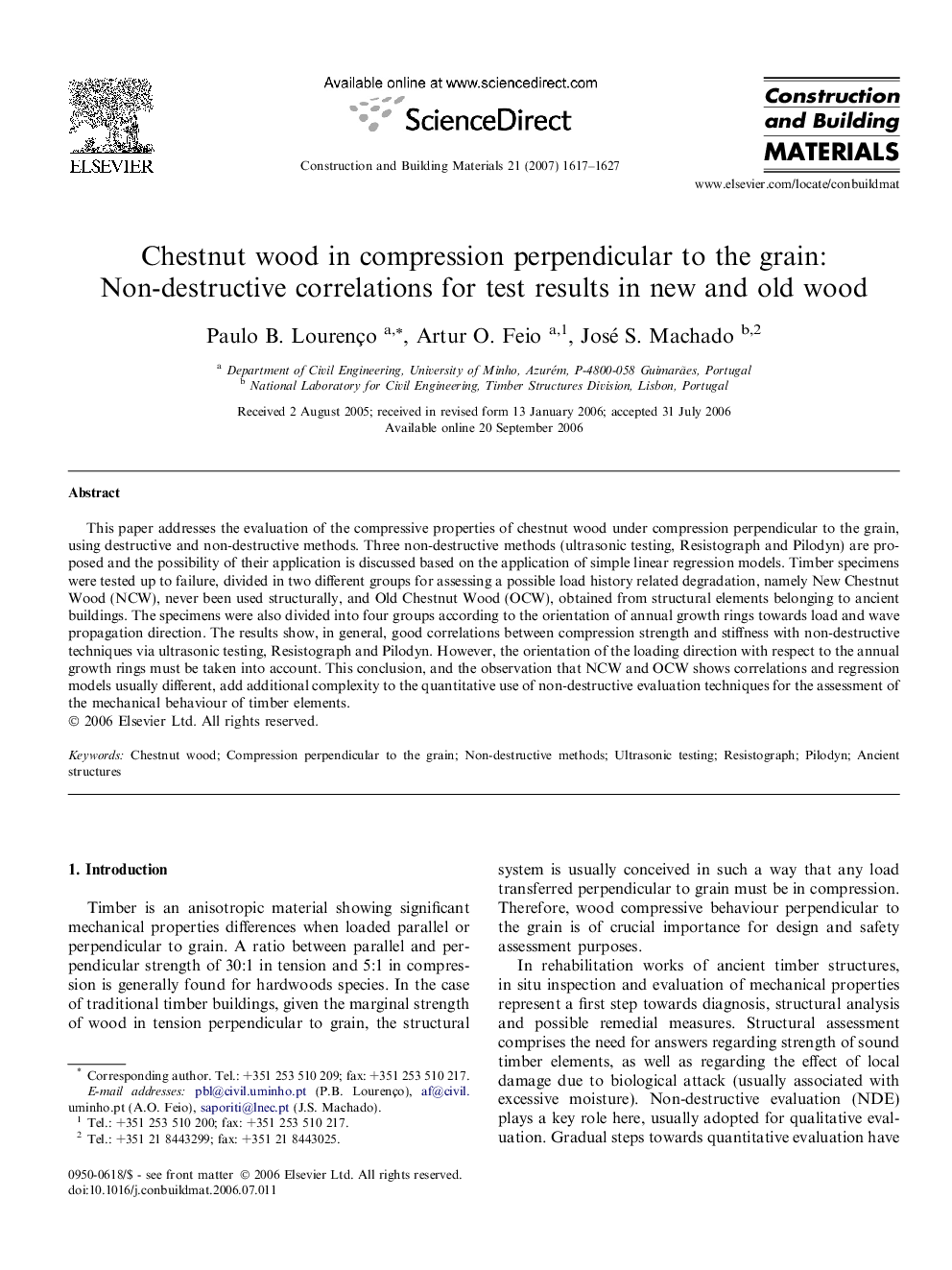| Article ID | Journal | Published Year | Pages | File Type |
|---|---|---|---|---|
| 261307 | Construction and Building Materials | 2007 | 11 Pages |
This paper addresses the evaluation of the compressive properties of chestnut wood under compression perpendicular to the grain, using destructive and non-destructive methods. Three non-destructive methods (ultrasonic testing, Resistograph and Pilodyn) are proposed and the possibility of their application is discussed based on the application of simple linear regression models. Timber specimens were tested up to failure, divided in two different groups for assessing a possible load history related degradation, namely New Chestnut Wood (NCW), never been used structurally, and Old Chestnut Wood (OCW), obtained from structural elements belonging to ancient buildings. The specimens were also divided into four groups according to the orientation of annual growth rings towards load and wave propagation direction. The results show, in general, good correlations between compression strength and stiffness with non-destructive techniques via ultrasonic testing, Resistograph and Pilodyn. However, the orientation of the loading direction with respect to the annual growth rings must be taken into account. This conclusion, and the observation that NCW and OCW shows correlations and regression models usually different, add additional complexity to the quantitative use of non-destructive evaluation techniques for the assessment of the mechanical behaviour of timber elements.
